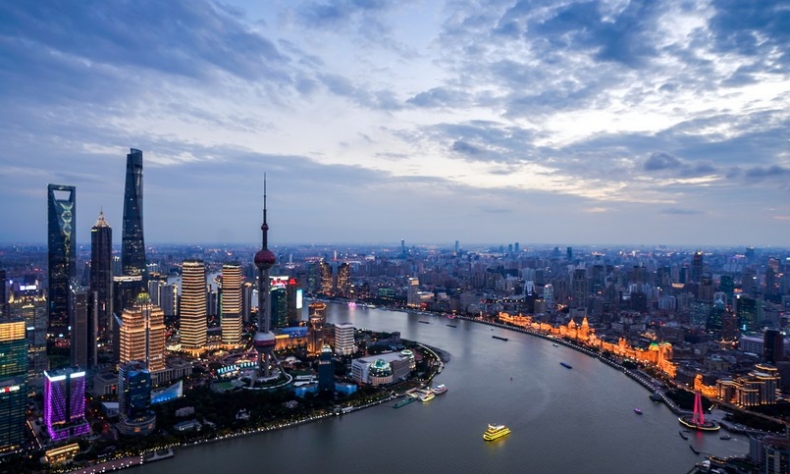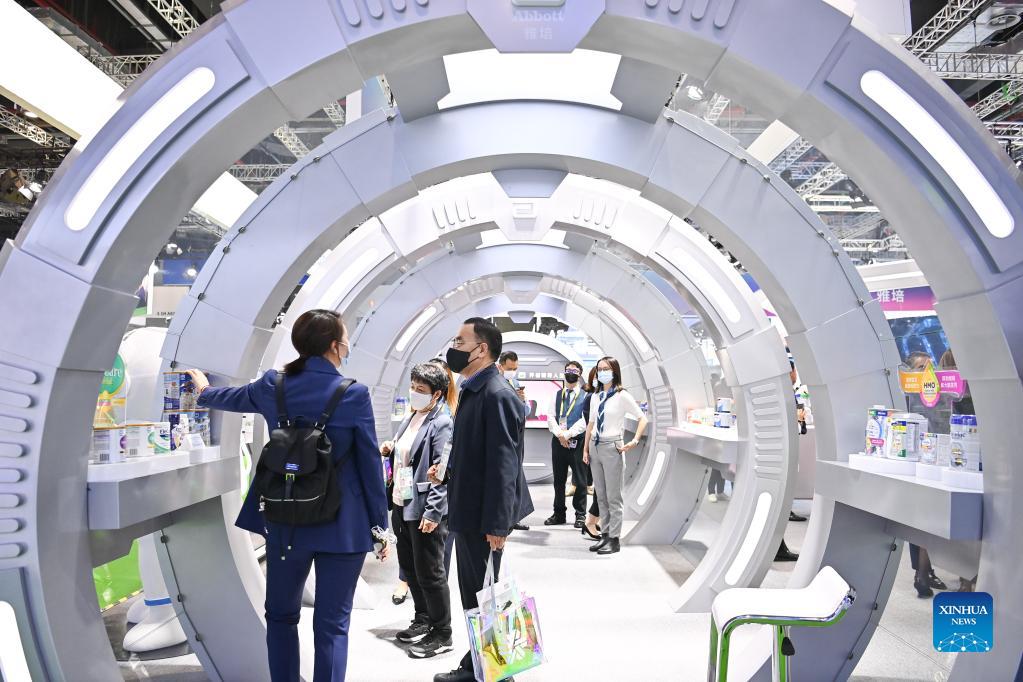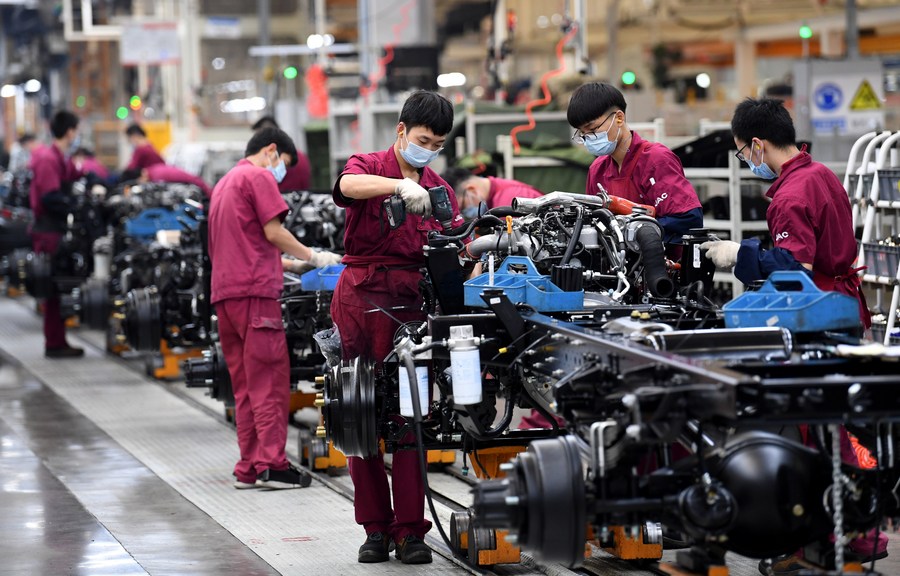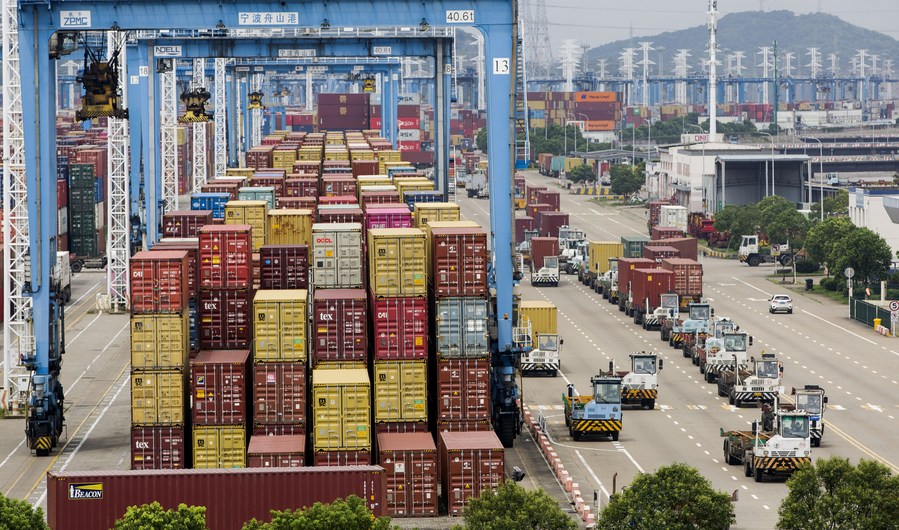Yangtze River Delta Region Makes Progress in Integrated Development

The Yangtze river delta region has become one of the most economically vibrant, open and innovative areas in China.
On August 1, the Commercial Aircraft Corp. of China (COMAC), headquartered in Shanghai, announced that the single-aisle C919 passenger jet it manufactured had undergone all the test flights necessary for obtaining a national airworthiness certificate. The jet is China’s first self-developed trunk jetliner.
The progress has been fast-tracked by the Yangtze River Delta integrated development strategy, which fosters close cooperation in the region that comprises Shanghai as well as Anhui, Jiangsu and Zhejiang provinces.
A civil aviation industrial chain has been formed in the region. Aramid fiber honeycomb—an extremely lightweight, high strength, non-metallic honeycomb produced by Advanced Composite Technology Materials Co. Ltd. in Shanghai is used to make the baggage hold and ceiling of the plane. Hefei Jianghang Aircraft Equipment Co. Ltd. in Hefei, Anhui, produced the oxygen system for the plane. In February last year, the Suzhou Municipal Government in Jiangsu signed a contract with the COMAC for cooperation on cultivating and building an aviation industry cluster. According to the contract, the COMAC will support Suzhou enterprises in carrying out scientific innovation on new materials, electronic parts and components and numerically controlled machine tools, and participate in producing parts and components for the COMAC.
Blueprint
A plan for the development of the Yangtze River Delta region, which then comprised Jiangsu, Zhejiang and Shanghai, was unveiled by the National Development and Reform Commission in 2010, which spelled out development goals to be achieved by 2015 and offered visions into 2020. According to the plan, the region will be developed into an important gateway for opening up in the Asia-Pacific region, a globally important center of modern service industry and advanced manufacturing industry, and a globally competitive world-class city cluster.
In 2018, Chinese President Xi Jinping announced at the First China International Import Expo in Shanghai to make it a national strategy, indicating the great importance attached to the region’s integrated development.

In December 2019, the Communist Party of China Central Committee and the State Council jointly issued an outline on the region’s integrated development. The document detailed development goals to be achieved by 2025 and offered visions into 2035. It also announced to include Anhui in the delta region.
By 2025, the Yangtze River Delta is to see substantial development and realize integration of its science and innovation industry, infrastructure, environment and public services, the document said.
The outline envisioned the Yangtze River Delta as the most influential and robust driving force of the nation’s development by 2035.
On August 20, 2020, Xi emphasized the importance of integrated and high-quality development of the region at a symposium held in Hefei, capital of Anhui.
He said measures should be taken to break administrative barriers, enhance policy coordination, and enable the smooth flow of production factors on a larger scale. He also underlined the necessity of promoting high-quality economic development of the Yangtze River Delta, adding that the region should not only provide quality products but also advanced technologies to support China’s quality development.
Over the past four years, the region, accounting for only 4 percent of China’s land area, has created a quarter of China’s GDP. It has become one of the most economically vibrant, open and innovative areas in China.
Innovation-driven growth
The region has pioneered scientific and industrial innovation. A coordinated innovation system led by Shanghai has been further improved and the building of a scientific innovation community has accelerated.
The Yangtze River Delta National Technology Innovation Center (NTI) established in Shanghai in June last year has combined Shanghai’s advantages as a scientific innovation center with the gigantic industrial economy of Jiangsu, Zhejiang and Anhui. The center has established strategic partnerships with 72 overseas and 61 domestic universities and research institutions and set up 218 innovation centers in collaboration with enterprises.

Liu Qing, head of the NTI, told local news portal Shanghai Observer that the center will provide technological support for the high-quality development of the delta region and the country as a whole.
Thanks to these efforts, a group of world-class industrial clusters are emerging in the delta region. The industrial scale of the region’s integrated circuit accounted for nearly 60 percent of the national total, that of the biomedicine and artificial intelligence industries accounted for one third of the national total, and the region’s output of new-energy vehicles accounted for 38 percent of the national total.
Yu Zhaobing, an official with the Hefei Development and Reform Commission, said the automobile industrial chain of the region has reduced the costs of production and attracted many leading automobile companies to move to Hefei. “For instance, automotive interiors and exteriors come from Shanghai and Zhejiang and electronic components come from Jiangsu,” Yu said.
Better connected
In addition to industrial cooperation, the infrastructure connectivity of the region has improved and a comprehensive modern transportation system has taken shape. Last year, the total length of high-speed railways in the region reached 6,542 km, increasing by 54.7 percent from that in 2018.
Construction of an intercity railway linking Shanghai, Suzhou City in Jiangsu and Jiaxing City in Zhejiang began in July this year and is expected to be completed around 2028.
Differing from existing high-speed lines providing one-stop transportation between Shanghai and the two neighboring cities, the new line will have more than a dozen stations along the way in places such as water towns, innovation parks and new cities in the heartland of the delta region where an integration demonstration zone of 2,400 square km was built in 2019.
When the railway goes into operation, Shanghai residents will be able to use their public transportation cards to take the train to neighboring Jiangsu and Zhejiang.
The region has also developed a world-class port cluster and airport cluster. The cargo throughput of Zhoushan Port in Ningbo City of Zhejiang has ranked first in the world for 13 consecutive years.
In 2021, the cargo throughput of the region’s ports accounted for 41.8 percent of the national total.

The region has 24 civil transport airports, achieving a cargo throughput of 6.25 million tons and a passenger throughput of 170 million last year.
The region has improved public services to provide convenience for residents. Previously, in order to have their medical expenses reimbursed, those living in the region had to return to seek medical care in their hometowns, where they are officially registered. Now, they are able to have their expenses reimbursed for healthcare provided at more than 10,000 medical institutions in the region.
A resident surnamed Yao from Jiaxing, who now lives in Shanghai after retiring, said she can have her outpatient expenses reimbursed at the hospitals in Shanghai instead of having to return to Jiaxing.
Li Jia, a resident of Jiaxing, said what is more important is that the medical resources in the region’s three provinces and one municipality can be shared by all of the region’s residents.
The region is also pursuing green development and working together to combat pollution and improve the environment. For instance, the three provinces and one municipality have collaborated to treat pollution in Taihu Lake, China’s third largest freshwater lake. A new round of efforts to improve the water quality of the lake began in June, when six central government departments released a plan for comprehensive treatment of the water environment of Taihu Lake.
 Facebook
Facebook
 Twitter
Twitter
 Linkedin
Linkedin
 Google +
Google +










